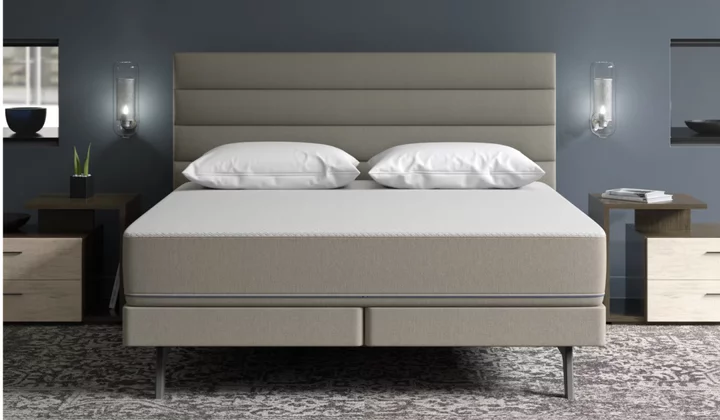Whether you get a gel manicure every three weeks like clockwork or seem to always find yourself painting your nails in your bathroom 15 minutes before you’re supposed to be somewhere, chances are you’ve been quietly shamed by someone in your life (who admittedly has really great nails) with this common refrain: You have to let your nails breathe. They are lying to you — probably not on purpose, but the “nails need to breathe” myth is one of our favorites to debunk.
If we’re to take the phrase literally, let’s get one thing straight: “Your skin, nails, and hair don’t breathe topically,” Elizabeth Tanzi, MD, board-certified dermatologist and member of the American Academy of Dermatology, told Refinery29. Dr. Tanzi explained that our nails, like our skin and hair, get nutrients and oxygen from within the body, not from surface areas.
However, it’s not completely misguided advice. If your nails are damaged at the surface (which could be due to a variety of factors, not necessarily related to wearing nail polish), they might benefit from a polish break — not for the purpose of getting more oxygen, but to mitigate additional damage or trauma. “If you are using products that contribute to damage, then taking regular breaks, or finding different products and supplementing with moisturizing and strengthening treatments, is recommended,” explains dermatologist Hadley King, MD.
So how do you know if your nails are damaged? Well, you’ll need to actually see your natural nails, so start by removing any nail polish for visual cues of damage if you haven’t already. “Make sure you pay attention to nail health and watch out for changes in color, thickness, or visible damage,” says nail educator Anastasia Totty. Additionally, if your nails feel “thin” or “weak,” it’s a good sign you might want to take a break.
If you’re dedicated to gels or acrylics, you probably already know of the recent research pointing to the potential radiation risk that comes with frequent use of UV nail lamps, but most skin and nail experts say there’s no need to freak out if that’s part of your routine: The level of UV exposure you’re actually receiving is minimal. To be on the safe side, though, it is recommended you bring UV-protective gloves to the nail salon, which will help block your hands from the UV. Additionally, manicurists agree that when it comes to gels and acrylics, professional removal is important, as trained salon professionals will take their time with gentle removal that will reduce the risk of surface damage.
Rachel Apfel Glass, the founder of Glosslab, endorses regular breaks between gel manicures, which she’ll get when she’s traveling or needs her manicure to last. Otherwise, she’ll wear regular (non-gel) nail polish and take breaks from that, too. “I almost always do ‘performance polish’ manicures and then will take a one-week break,” says Apfel Glass. The “performance polish” manicure she’s referring to involves a polish containing “nail vitamins,” including biotin, vitamin E, and rosemary, that doesn’t require a UV lamp and is easy to remove with a non-acetone remover.
If you’re taking a break exclusively from long-wear or gel nail services, you’re likely going to be using nail polish remover more often, as traditional nail polish formulas need to be removed and changed more frequently than shellac or gels. In this case, you’re advised to use a non-acetone remover to limit dehydration of the nail bed. “If you use acetone to remove nail polish, it is quite damaging to your nails,” says Jin Soon Choi, expert manicurist and founder of JINsoon. “I recommend using non-acetone remover and minimizing the exposure to the nail bed. Saturate a cotton ball in the remover and hold it on the nail surface for a few seconds, then swipe off the material in one swoop. Next, apply cuticle oil and hand lotion to offset the dehydrating effect of the remover.”
Nadine Abramcyk, founder of nail brand tenoverten, agrees that when it comes to optimizing nail health, non-acetone remover is an important part of her routine. “I only use The Rose Soak, a gentle yet effective polish remover derived from essential oils and vitamins,” Abramcyk explains of her brand’s signature remover formula. “I deem this our ‘unicorn product’ given its unique ability to remove polish while fortifying, nourishing, and hydrating nail beds.” She also endorses cuticle and nail oils.
Experts like Abramcyk, Choi, Apfel Glass, and Dr. King all practice polish breaks, just to make sure their nails are in a good place strength-wise. Your approach doesn’t have to be prescriptive; Choi believes in “taking a few days’ break from polish once every month or two.” That said, if you’re happy with the way you do your nails and aren’t observing any ill effects, then there’s no pressing reason to give it up. As a nail educator, Totty gets hard-gel extensions that she refills every three to four weeks, and says her nails remain healthy. “My nails are part of my personality and style,” she says.
Personally, I rotate between hard gels, soft gels, and regular polish. If my nails feel different after a gel service, I find it’s less a sign of “weakness” and more like I’m noticing the absence of a coating that I’ve been used to for three weeks. I’m wearing a hard gel now and, after a proper professional removal, I’m going to switch to regular DIY manicures for a while. I’m not going to stop wearing nail polish altogether, though — because as far as I’m concerned, naked nails are not inherently better unless they make you feel better.
At Refinery29, we’re here to help you navigate this overwhelming world of stuff. All of our market picks are independently selected and curated by the editorial team. If you buy something we link to on our site, Refinery29 may earn commission.









